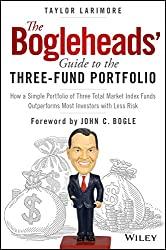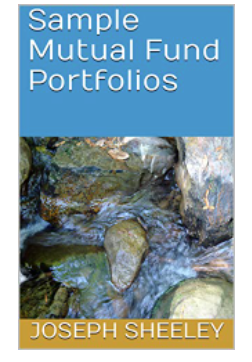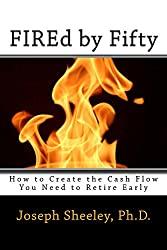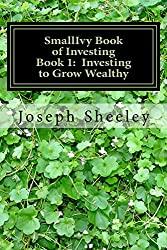
Photo by Ksenia Chernaya on Pexels.com
" data-orig-size="1880,1255" data-image-title="eggs in different colors" data-orig-file="https://smallivy.files.wordpress.com/2023/01/pexels-photo-4048670.jpeg" data-image-description="" data-image-meta="{"aperture":"0","credit":"","camera":"","caption":"","created_timestamp":"0","copyright":"","focal_length":"0","iso":"0","shutter_speed":"0","title":"","orientation":"0"}" data-medium-file="https://smallivy.files.wordpress.com/2023/01/pexels-photo-4048670.jpeg?w=300" data-permalink="https://smallivy.com/2023/01/29/why-i-like-the-three-fund-portfolio/pexels-photo-4048670/" alt="" class="wp-image-23067" data-large-file="https://smallivy.files.wordpress.com/2023/01/pexels-photo-4048670.jpeg?w=723" />Photo by Ksenia Chernaya on Pexels.comOne perception is that investing is complicated. Financial advisors usually don’t do anything to challenge this perception because it means people will come to them to manage their portfolios. But the truth is that you can do pretty well managing your own portfolio without a whole lot of knowledge about stocks, bonds, and other assets. One way to do this is to use the Three Fund Portfolio. This can be learned simply by buying and reading/applying a single book. That’s like a $25 investment and maybe a day of your time. Today we’ll go into what the Three Fund Portfolio is and the ideas behind it.

(Note, if you click on a link in this post and buy something from Amazon
The Keys to Successful Investing
The Three Fund Portfolio (TFP) takes the ingredients for success in investing: diversification, time frame, and low-costs and applies them in a simple way. Each of these elements must be present to do well, but this can be achieved using just three funds and investing in them properly. We’ll first go through each of these principles, then discuss how the TFP applies them.
Diversification: Diversification is spreading out your money into different types of assets (stocks, bonds, real estate, etc…) and different areas of the markets. This addresses what are called single asset risk and volatility risk, Single asset risk is the risk that something will happen and cause a large loss from which your position will never recover if you put all of your money in one place. For example, if you put all your money into Starbucks and then the CEO runs the company into the ground or coffee is determined to cause cancer and demand for it vanishes, you could lose your whole investment forever. By diversifying into many assets and different types of assets, the effect of something happening to one of them will be insignificant for your whole portfolio.
Volatility is the level of up and down changes in value of your investments. Higher volatility means higher returns when you’re investing in things like stocks, but it can be disturbing to have large swings in your portfolio value. If you buy different assets and different types of assets, much of the time the movement down in price of some assets in your portfolio will be offset by an increase in the price of another asset. Because the returns generated are just dependent on the volatility of each of the assets, mixing assets together will reduce the volatility of the whole portfolio but still preserve the returns the higher volatility assets provide. In English, this means your $10,000 portfolio will go up or down by $1000 on a typical year but you’ll still get the 12% returns you would have gotten if you had a more volatile portfolio going up or down 30% most years.
For example, let’s say you buy 1000 shares of XYZ corporation, a small company that makes widgets. Because the widget market has boom and bust cycles that are difficult to predict, you might see drops of 50% or more in share price when the widget market sours. If XYZ cost $30 per share, this level of volatility means you might see your $30,000 portfolio drop to $15,000 over the course of a week. When times are good, you will often see gains of 200% or more, making up for the bad times, but you really don’t want to see your portfolio value drop so much because it makes you scared and tempted to sell out at just the wrong time.
If instead of putting it all in XYZ you only buy 500 shares of XZY and 1000 shares of QRS, which makes toasters and costs $15 per share, putting $15,000 into each, you’ll generally see a lot less volatility since people tend to buy toasters all of the time even if the demand for widgets goes up and down. A 50% drop in XYZ now would only mean a drop of $7500 in portfolio value. If QRS went up at the same time, the loss would be reduced or you might even see a gain. There will be times when both companies fall together, as well as times when they both rise together, but most of the time they’ll be bouncing in opposite directions. If both are good companies, however, they’ll move up more than they move down and your portfolio will still rise in value over time.
If you bought 10 companies, the effect of changes in the price of one of the stock would have even less of an effect. If you buy 100 stocks, this drops even more. Because the whole stock market goes down at once sometimes, holding just stocks will still result in some fairly big swings even if your risk of seeing your portfolio drop to zero is almost eliminated. If you put some of your money in bonds, during some market downturns your bond position will offset your stock position and you won’t lose as much or maybe even see a gain. The trick is to spread your money out to companies and asset types that don’t move together. This is known as being uncorrelated. (Note, an 80% bond 20% stock portfolio is the minimum volatility portfolio. This is not the maximum likely gain portfolio.)

Time frame: Volatility is often pointed to as risk when investing. It isn’t that volatility always creates losses since some of those movements will be to the upside, but having prices fluctuate rapidly and by large amounts makes it harder to predict what your returns will be. If you need the money tomorrow and put your money in the bank, chances are very good that it will be there since bank accounts have very low volatility and government backing. If you put it in 100 shares of Amazon, however, the stock price could easily go up or down 10% or more during the trading day. This means you may have substantially more money tomorrow, but you could also have less. The chances of either are roughly the same. It is most likely that you’ll have nearly the same amount (say, within 3%, plus of minus) tomorrow if you made such an investment, but you could have twice as much or nothing. Both outcomes are entirely possible and unpredictible.
But if you’re buying a stock and holding it for ten years, the change in share price during that period will be most affected by the change in the earnings of the company during that time. This means that if you can predict which companies will have higher earnings in ten years than today, you can predict with fairly good certainty which companies will have higher share prices in ten years. This isn’t simple, but it is far more doable than predicting what will happen to the price of a company during a single day. You can also just determine which companies are likely to have higher earnings and buy several of them (going back to diversification.) Think of the NFL where skilled team managers can look at the people coming out of college and determine which players will do well in the NFL based on their records in high school and college and their condition when entering the NFL. In some cases things happen and they never go anywhere, but the majority of choices are right. If you assemble a team composed of all players with good records you’ll most likely have a team that wins more than one composed of all players with bad records. We can look at the history of companies and their condition right now and predict which are likely to do well in the future. If given enough time to get over the minor bumps and issues that unexpectedly arise, many of these choices will pan out.
This is why the second key is time frame or time horizon. If you’re only investing for a short period of time, the random things that happen make it impossible to predict returns, so you’ll want to stick to things that have low volatility like bank accounts. If you have a long time to invest, the random fluctuations that happen will average out and you can start to predict your returns with more volatilie investments like stocks. Because more volatilie investments have higher returns, you want to be in them when you have a long time period to invest. Stocks are more volatile than bonds, so stocks will have higher returns over long periods of time, but bonds will be more predictable over shorter periods of time. A mix of the two will reduce volatility even more, so, for example, a 20% / 80% stock/bond portfolio is even more stable than a 100% bond portfolio over a time period of only a few years. If you have less time and cannot afford a loss, all cash in a bank account is the only choice.
Before you can start investing, you need money to invest. Please check out FIREd by Fifty: How to Create the Cash Flow You Need to Retire Early

Low-costs: Costs, meaning management fees and other investment expenses, are the third key to understand when investing. Costs always reduce the amount you make since they take away from whatever returns you get and add to any losses directly. You should therefore always seek to limit your costs as much as possible. Only pay for extra costs if the amounts in extra returns you can get will exceed the costs.
Most mutual fund investment managers do not perform better than an index (which is just a collection of stocks that was picked to simply follow the performance of an area of the markets, not because anyone thought they would do particularly well). This is not because managers don’t know what they are doing or are bad stock pickers, but because the cost of paying the salaries for them and their staffs, plus paying for the trades they make, their offices, their research materials and their travel to do research is normally higher than the additional returns they generate. To make things worse, if they are successful and attract a lot of investment money, they then need to buy more stocks and assets to invest all of the money, meaning they buy not just their top picks, but their second, third, forths, and fifth pick. They end up spreading out their money so much that they get the same performance as the markets, so they end up getting the same performance as the indexes. Subtract their costs and fees off of the performance and the indexes have higher returns.
You cannot buy indexes directly, but there are funds called index funds that assemble a portfolio based upon the funds in an index. Because they still have some costs and the indexes have none, index funds will never actually match the returns of their respective index, but because there is no one there doing research and picking stocks, index funds can have very low fees and will often outperform funds that have people choosing stocks (called active managers). Index funds therefore are used in the TFP.
.

The Three Fund Portfolio (TFP)
The TFP is a way of creating a simple portfolio uses the three keys above. The portfolio is constructed of a stock fund that covers the US markets, a bond fund that covers the US bond market, and a stock fund that covers the non-US markets. For our example, we’ll use Vanguard Exchange Traded Funds:
US Stocks: Vanguard Total Stock Market ETF, VTI
Non-US Stocks: Vanguard Total International Stock ETF, VXUS
Bonds: Vanguard Total Bond ETF, BND
These are the only three funds we’ll use in our portfolio. Using the three funds, invested over a wide array of assets and with each fund in a different type of asset/area of the market, mixing them together creates diversification. Because they are index funds, they have low costs. We’ll change the percentages we invest in each based upon our time horizon and personal tolerance for volatility. We therefore are covering the three investment keys.
Let’s look at some different investment scenarios and how we would use the three funds in the TFP strategy.
- Investing for retirement in our twenties
Here we’re investing for something that isn’t going to happen for 40 to 50 years. We can therefore tolerate a lot of volatility because the long time frame will average out the ups and downs. Personally, because I have a rock stomach for volatility and can just ignore my portoflio through bear makets, I would invest as follows:
60%: Vanguard Total Stock Market ETF, VTI
40%: Vanguard Total International Stock ETF, VXUS
0%: Bonds: Vanguard Total Bond ETF, BND
Over such a long period of time, stocks will provide a return that is far better than bonds, so there is no reason to add any bonds at this point. US and non-US stocks will perform about the same, so they are basically equally weighted. I favored US over non-US slightly, but that is just personal nation-bias on my part and has nothig to do with investment returns. Because US and Non-US stocks both will perform about the same over the long time period, the difference between this and a 50-50 portfolio won’t matter much. Having the two types of stocks in my portfolio will smooth-out the volatlity while providing the same return as buying 100% in either US or non-US stocks.
The portoflio I would choose is a roller coaster with some 30-40% dips along the way. If it would help you sleep better and you don’t want such a wild ride, you could add some bonds with just a little lower return. A common distribution that would make things a little less crazy would be:
40%: Vanguard Total Stock Market ETF, VTI
40%: Vanguard Total International Stock ETF, VXUS
20%: Bonds: Vanguard Total Bond ETF, BND
You’ll still see some big dips here because you still have a lot of stocks, but your bonds will often tap down the extremes just a bit. You can also just look at your bond returns if your stock returns aren’t pleasing during a given year.
I would keep this portfolio clear through my forties and into my early 50’s. Once I got to within about 10 to 15 years until retirement, I would then start letting off the throttle a bit. This is both because I’d have less time left to recover from a big downturn and because bond returns might beat stock returns over a shorter period.
2. Investing within the retirement red zone
Once you’re ten to fifteen years from needing the money, it is time to start being a bit more cautious than you had been. With the three fund portfolio this means adding more bonds. Realize that you won’t need all of the money at once, so you can still weather some downturns, but you don’t want to see a huge crash set you back and keep you at the office longer than you would like. In addition, because stocks are more volatile, bonds may outperform stocks as time horizon gets smaller. I would therefore shift 10 to 20% more of my portfolio to the bond fund at this point. Personally, my portfolio would then be:
50%: Vanguard Total Stock Market ETF, VTI
30%: Vanguard Total International Stock ETF, VXUS
20%: Bonds: Vanguard Total Bond ETF, BND
Note that my US bias still remains, so I have more in VTI than VXUS. Again, it would be just as logical to make it equal weighted in the US and Non-US funds.
If you were a bit more timid and had kept bond all along, you might shift to:
35%: Vanguard Total Stock Market ETF, VTI
35%: Vanguard Total International Stock ETF, VXUS
30%: Bonds: Vanguard Total Bond ETF, BND
Even if you are timid I wouldn’t go any farther into bonds than this since you’re probably sitting on a smaller portfolio than I would be after staying in all stocks the whole time, so you need some extra growth to help get to a large enough portfolio to sustain you through retirement.
3. Investing at the start of retirement
At the start of retirement, you could basically keep using your three fund portfolio with the addition of a money market fund to hold cash you’ll need right away. You would take advantage of your money market cash to pay for things without needing to sell shares of your funds constantly. You’d add to it when there were opportunities where the markets had rallied and then just sit tight through downturns as much as you could. Stocks and bonds are about as likely to perform about the same over periods of one to five years, so money you will need during that period should be equal weighted in both. Money you still won’t need for longer periods of time would be more heavily weighted in stocks. A portfolio for someone on the day they retired might look like:
30%: Vanguard Total Stock Market ETF, VTI
30%: Vanguard Total International Stock ETF, VXUS
35%: Bonds: Vanguard Total Bond ETF, BND
5% Money Market Fund/CDs/Etc….
4. A taxible spending account
As a final example, let’s look at investing in a taxible spending account. This is an investment account that you keep to help pay for the big expenses that come up like cars and home repairs without going into debt. It can also be used as an additional source of income to enhance lifestyle such as vacations and hobbies. I highly recommend everyone create one of these as it will make your financial life easier and give you a lot more money to spend over your lifetime since you’ll be making, not paying interest.
This account is taxible, but you’ll only pay taxes on dividends and interest. Capital gains will be taxed as well, but only when you realize them by selling shares or owning a fund that sells shares within the fund. Money that is left in the stocks in your funds where the fund company doesn’t make sales, which is common for index funds, will compound untaxed until they are sold or you sell shares of the fund. We want to make sure most of the money that we are not expecting to need anytime soon is in assets with few or no dividends and interest payments so that we don’t need to pay taxes on money that will just be rolled over. For money that we will spend, it is convenient to have interest payents covering at least some of this amount so that we don’t need to sell shares when we need cash. It might be an opportune time to sell when we need to cash plus we might have expenses for selling.
Our taxible spending portfolio might look like this:
40%: Vanguard Total Stock Market ETF, VTI
40%: Vanguard Total International Stock ETF, VXUS
15%: Bonds: Vanguard Total Bond ETF, BND
5% Money Market Fund/CDs/Etc….
Closing
This wraps up our discussion of the TFP. It is an easy way to get diversification and reduce the harmful effects of volatility while still preserving the superior returns provided by high volatility assets.
Have a burning investing question you’d like answered? Please send to[email protected] or leave in a comment.
Disclaimer: This blog is not meant to give financial planning or tax advice. It gives general information on investment strategy, picking stocks, and generally managing money to build wealth. It is not a solicitation to buy or sell stocks or any security. Financial planning advice should be sought from a certified financial planner, which the author is not. Tax advice should be sought from a CPA. All investments involve risk and the reader as urged to consider risks carefully and seek the advice of experts if needed before investing.
